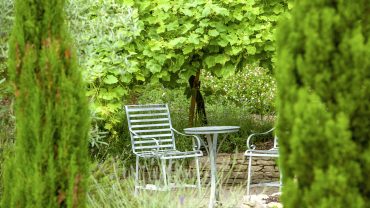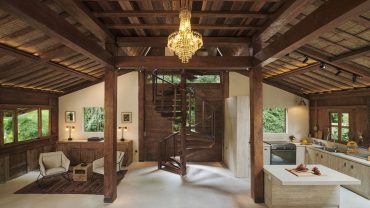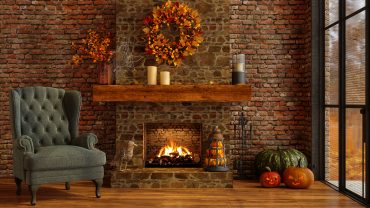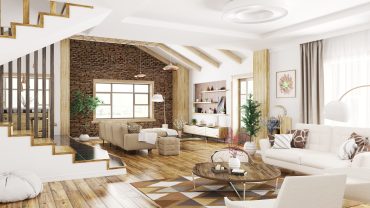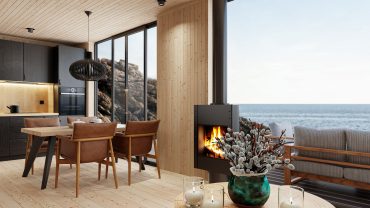Italianate interior design is an aesthetic style that prioritises beauty, symmetry, and luxury. With its emphasis on grandiose spaces, intricate details, and harmonious proportions, Italianate interior decor captures the essence of Italian sophistication and charm.
Generally speaking, Italianate interiors are distinguished by their integration of symmetry, proportion, and balance. It’s versatile, ranging from the opulent and ornate to the rustic and understated, catering to a broad spectrum of tastes and preferences. In more modern form, this unique approach is designed to combine the splendour of historical grandeur with contemporary practicality.
So whether you’re doing up an old house, or want to bring a touch of Renaissance style to a downtown loft space, Italianate interior design may be just what you’re looking for.
A Short History of Italianate Interiors

Landscape near Rome with a View of the Ponte Molle, 1645 Claude Lorrain (Credit: Sepia Times via Getty Images)
Italianate house interior design takes its influences from the creative heritage of the Renaissance, and began to emerge as a distinct style in the early nineteenth century. This evolution of earlier design was inspired by the idyllic landscapes of the Italian countryside, along with its historic villas and estates.
A key milestone in the history of Italianate interior design was the creation of Cronkhill, an Italianate villa and the first of its kind in England. Designed by John Nash in Shropshire in 1802, it is thought to have been partially inspired by Claude Lorrain’s famous painting Landscape near Rome with a View of the Ponte Molle. This landmark epitomised the transition of Italian architectural elements into British homes, marking the beginning of the Italianate style’s influence beyond Italy’s borders.
Cronkhill was celebrated for its innovative style, blending traditional Italian architectural elements with the needs of contemporary living. This grand undertaking laid the groundwork for the development of Italianate interior decor, inspiring architects and designers to incorporate Italian elegance into their creations, regardless of geographical location.
The Key Principles of Italianate Interior Design

Opulent Italianate interior design (Credit: image_of_life via Getty Images)
Proportion, symmetry, and the use of luxurious materials are the cornerstone of Italianate interiors. Another key element is the use of light, as well as warm, earthy colours punctuated with vibrant hues that reflect the landscape and art of Italy.
The incorporation of classical architectural elements, such as columns, arches, and friezes, along with ornate furniture and decorative pieces, further underscore the style’s commitment to beauty and elegance.
Natural Materials
Italianate house interior design prominently features natural materials, embracing elements like marble, quartz, terracotta, wood, cast iron, and stone. These materials are chosen not just for their aesthetic appeal but also for their durability and timeless quality. By incorporating these into interiors, the design pays homage to Italy’s rich natural landscapes and historical craftsmanship.
Colour Palette
The colour palette in Italianate interior decor is deeply inspired by the Italian countryside, with its earthy, creamy tones and vibrant hues. Olive greens, terracotta oranges, and Tuscan yellows bring warmth and depth, while accents of gold and azure add a touch of opulence. This palette creates a welcoming atmosphere that’s both luxurious and grounded.
Comfort & Functionality
While the emphasis of Italianate interiors is on beauty, comfort and functionality aren’t sacrificed. Spaces are designed to be lived in and enjoyed, combining elegant aesthetics with practical layouts.
Design Motifs & Textiles
Design motifs and textiles in Italianate interior design often draw from classical themes, including vines, cherubs, and mythological figures. Fabrics are luxurious, with velvet and silk used in upholstery and draperies to add depth and texture. These elements introduce a narrative quality, weaving stories of romance and history into the fabric of the design.
Furniture
Italianate furniture is characterised by its elegant craftsmanship and attention to detail, with a nod to both classical and contemporary designers. Materials like inlaid wood, wrought iron, and marble are common. Early twentieth century designers such as Gio Ponti, Achille Castiglioni, and Ettore Sottsass contributed to modern Italianate house interior design, blending traditional Italian craftsmanship with modern lines and forms.
Exquisite Elegance

Stunning Italianate interior (Credit: Owaki - Kulla via Getty Images)
At the heart of Italianate interior design – and Italian style in general – is an innate sense of elegance. This is achieved through a harmonious balance of all elements, from the grand scale of architecture to the intricate details of a wrought iron gate or a marquetry table. Every choice is deliberate, aiming to create spaces that are both majestic and warmly inviting.
La Dolce Vita: Italianate Interior Design

Sensational marble staircase (Credit: Nikada via Getty Images)
Through its rich history, distinctive principles, and breathtaking aesthetics, Italianate interior decor continues to captivate and inspire, offering a slice of Italian luxury, culture, artistic legacy, and craftsmanship into the home. It’s more than just a decorative style. By integrating the grand architectural elements of Italy’s incredible history – from the Romans to the Renaissance – with the comforts and practicalities of modern living, this design approach offers a truly timeless aesthetic.





